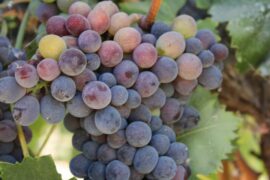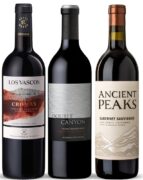Natural wine is a term sometimes used to describe wine, but there is no universal certification defining what constitutes a natural wine. Organic farming, hand harvesting, and minimal intervention in the winemaking process are key aspects, along with the use of wild yeast and minimal sulfites.
What is Natural Wine?
Great question! There is no overarching certification or organization that officially defines natural wine. Technically, any producer can label their wine as natural if they choose. However, in France, a small step toward certification was taken in the spring of 2020 with the creation of “Vin Méthode Nature.” The aim is to express the grape and its terroir in the wine while preserving the health of the soil by using as few pesticides and chemicals as possible. The general philosophy is to minimize intervention in the winemaking process.
Is Orange Wine the Same as Natural Wine?
Orange wine, which is white wine that has undergone extended skin contact and acquired a darker color, is often made in clay vessels and has strong ties to the natural wine movement. However, it is not a synonym for natural wine.
How Does Natural Wine Taste?
Natural wines are typically fresh, fruity, and lack oaky notes. They are often described as “wild” in flavor. Visually, natural wines can appear cloudy with sediment, as they usually undergo little to no filtration.
Unique and Unconventional – Natural Wine Challenges Tradition
Natural wine challenges traditional ideas of how wine from a certain region or grape should taste. Terms like “juicy” are sometimes used to describe these wines. However, they may taste unusual or even faulty to those expecting a conventional wine.
Common aromas found in natural wines:
- Brettanomyces (brett): A yeast that produces aromas like ammonia, leather, and barnyard. In small amounts, it adds complexity, but in large amounts, it can overpower the wine.
- Oxidative flavors: Wines exposed to oxygen may develop flavors of nuts, red apples, and have a dark yellow color. This is common in natural wines with low or no sulfites.
- Reductive character: Wines made with minimal oxygen exposure can develop notes of flint and struck matches.
- Volatile acids: Often present as vinegar-like aromas, a result of acetic acid during fermentation.
Pairing Natural Wine with Food
Light and fresh natural wines pair well with vegetarian and lighter dishes. Oxidative flavors go well with baked dishes and fatty vegetarian meals, while reductive wines are fun to match with dishes featuring raw egg or asparagus.
How Are Natural Wines Labeled?
Since there is no independent third-party verification of natural wines, it’s up to each producer to use the term. Natural wines are marked if they also carry an organic or biodynamic certification.
How to Find Natural Wines at Wineguide?
You can search for natural wines by typing “natural wine” into the search field on Wineguide’s website using the Wineguide AI Chatbot. The results will show wines that producers or suppliers label as natural, and you can also use the filter option to refine your search.
Can Natural Wines Be Aged?
Natural wines can be stored, but with lower sulfite levels, their aging potential is generally shorter compared to conventional wines. This is especially true for white wines that lack tannins.
What is Vin Méthode Nature?
Vin Méthode Nature is a French label created by the association Syndicat de défense du vin naturel, which consists of various natural wine producers. To use the logo, producers must meet certain criteria: grapes must be organically grown and handpicked, fermentation must use wild yeast, and techniques like pasteurization or alcohol removal are prohibited.
There are two versions of the Vin Méthode Nature logo: one for wines with no added sulfites, and another for wines with sulfite levels below 30 mg/L.
The Origins of the Natural Wine Movement
The natural wine movement began in France, particularly in Beaujolais, in the 1960s. Young winemakers wanted to make wine “as it was in the past,” without added sulfur dioxide. By the 2010s, the concept caught the attention of wine consumers, as a reaction against overly extracted wines. Growing interest in sustainability and vegetarianism may have also contributed to its rise.
Are Other Wines Manipulated?
Some argue that conventionally made wines are “manipulated,” but this can be misleading. The term refers to practices like filtering, fermenting, and aging in oak barrels, which are common and legal methods of winemaking.
Minimal Intervention
Natural wine producers aim to minimize the use of additives and methods that alter the final product. Many avoid filtration or the addition of sugar or juice. Oak chips or staves are also avoided.
In the vineyard, there is a general consensus:
- Grapes should be organically or, preferably, biodynamically farmed.
- Harvesting should be manual with limited yields.
- Only wild yeast from the grape skins should be used.
In the winery, the following practices apply:
- No added sugar (chaptalization), tartaric acid, or industrially produced yeast.
- Micro-oxygenation (controlled oxygen exposure) should be avoided.
- Water or alcohol should not be removed via reverse osmosis to increase concentration.
Are Natural Wines Completely Free of Sulfites?
No, most producers allow the use of sulfites. Sulfur dioxide naturally occurs during fermentation and may be added in small amounts to stabilize the wine during bottling. Limits vary between organizations, with sulfite levels for red wines ranging from 30 to 80 mg/L. However, some producers choose to make wine sans soufre (without added sulfur).
In summary, natural wine producers often define themselves as much by what they reject as by what they stand for, focusing on small-scale production, minimal human intervention, and careful use of oak.





















































